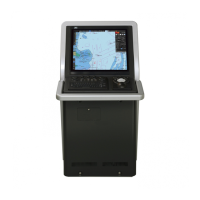B-113 Appendix B Menu List and Materials
1
2
3
4
5
6
7
8
9
10
11
12
13
14
15
16
17
18
19
20
21
22
23
APP B
24
25
27
APP C
Indication:
The 'time end' will consist of a date and a time separated by a capital AT@. The date should be
encoded using 4 digits for the calendar year (CCYY), 2 digits for the month (MM) (e.g. April =
04) and
2 digits for the day (DD). The time should be encoded using 2 digits for the hour (hh), 2 digits for
the
minutes (mm) and 2 digits for the seconds (ss). This conforms to ISO 8601: 1988.
Format:
CCYYMMDDThhmmss (mandatory)
Example:
19940426T094500 for a period ending at 09:45 am on 26 April 1994.
Remarks:
The attribute 'time end' indicates the end of a active period.
Attribute: Time start
Acronym: TIMSTA Code: 169
Attribute type: A
Indication:
The 'time start' will consist of a date and a time separated by a capital AT@. The date should be
encoded using 4 digits for the calendar year (CCYY), 2 digits for the month (MM) (e.g. April =
04) and
2 digits for the day (DD). The time should be encoded using 2 digits for the hour (hh), 2 digits for
the
minutes (mm) and 2 digits for the seconds (ss). This conforms to ISO 8601: 1988.
Format:
CCYYMMDDThhmmss (mandatory)
Example:
19940212T162000 for a period starting at 04:20 pm on 12 February 1994.
Remarks:
The attribute 'time start' indicates the start of an active period.
Attribute: Call sign
Acronym: CALSGN Code: 6
Attribute type: S
Definition:
The designated call-sign of a radio station.

